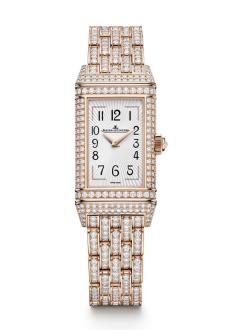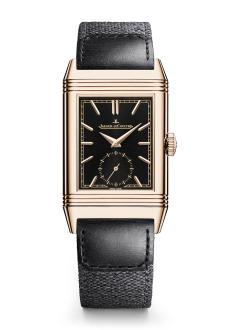Nearly a century ago, in 1931 to be precise, Jaeger-LeCoultre created something previously unthinkable: a watch whose case could be completely turned over, to protect its dial. Designed in the purest Art Deco spirit, as was the style at the time, it was the world’s first true sports watch. But it was created with a very specific sport in mind: polo. While Cartier had created the first wristwatch for aviation pioneer Alberto Santos-Dumont in 1904, it was not referred to as a pilot’s watch at the time. Similarly, although Rolex developed the first waterproof watch in 1926, it was not initially called a diving watch. This is the story of the Reverso, the first modern sports watch.

It all began with a challenge: to create a wristwatch that could be worn during a polo match without the risk of being broken. In the early 1930s, British army officers stationed in India spent most of their free time playing polo. The matches were extremely lively, sometimes even violent, and watches were simply not up to the task. One day a wealthy businessman, César de Trey, happened to attend a match. Being well-connected in the watch industry and knowing both Jacques-David LeCoultre and the Parisian firm Jaeger SA, he had an excellent idea. He would soothe the frayed nerves of these exasperated officers by finding a way to protect their watches from harm. The solution was a case that could be reversed.

Back in Europe, de Trey approached his contacts and commissioned French engineer René-Alfred Chauvot to design this dream case. On 4 March 1931, the Paris patent office received an application to register “a watch that can slide in its support and be completely turned over”. In July, César de Trey bought the rights to René-Alfred Chauvot’s designs and in November he registered the name Reverso. An icon was born, and manufacturing began immediately thanks to a partnership signed with Jacques-David LeCoultre. It was an instant success, with the first pieces being sold less than nine months after the patent application was filed. The Reverso was beautiful, modern and revolutionary, and was quickly adopted by trendsetters from all walks of life. The case was initially available in gold or steel, and ladies’ models were introduced that could be worn not only on the wrist but also as a pendant, or as a handbag accessory. For those who wanted to really stand out from the crowd, brightly coloured lacquered dials could be made to order. The back of the case could also be personalised with an engraved or lacquered motif.

Since then, the Reverso has constantly reinvented itself while remaining faithful to its extraordinary DNA. The case, whether masculine or feminine, big or small, continues to surprise. But one thing never changes: it’s always reversible. Sometimes, when reversed, the flat surface it reveals plays its original protective role, while offering creative territory for an engraving or miniature enamel painting. But this legendary reversible case can also reveal a second dial on the back. The Reverso then becomes Duetto, offering a multiplicity of dial architectures and complications. The possibilities of the Reverso collection are endless. Fronts and backs can be combined with different complications and/or dial styles. You might have a classic chronograph on the back, a skeletonised calibre on the front, a feminine daytime dial on the back, a sophisticated evening dial on the front, hours and minutes on the back, and a second time zone on the front.

Today, the legend lives on, and fine watch enthusiasts are eagerly awaiting the Reverso centenary models due to be released in 2031. To be continued!











